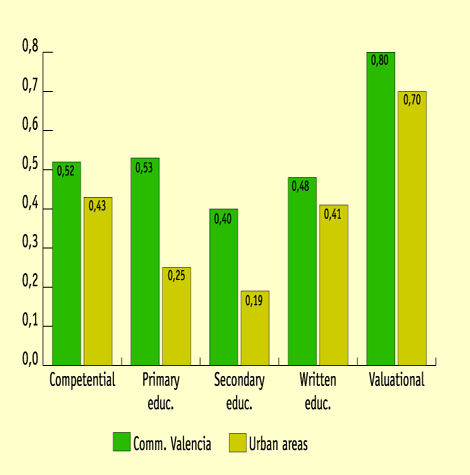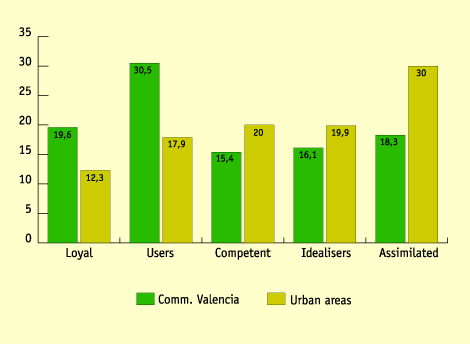
| Sociolingüística catalana |
Language attitudes and loyalties in the Valencian Country, by Lorena Císcar, David González and Pau Pérez |
||||
| CONTINUA |
| 4. Language Attitudes and Loyalties in
the Community of Valencia
Following this outline of our abstract measuring instruments, we will now turn to locate them in a working context, albeit through a very general look at the linguistic situation of the Community of Valencia. The following diagrams offer a static view of situations of language shift and standardisation which, for reasons of space, do not analyse the social structure behind each indicator and group. The diagrams refer to data for the whole of the Community of Valencia and for urban areas. Figure 1. Loyalties in the Valencian Country
A further difference between urban areas and the Community as a whole can be appreciated in primary oral use (Primary Instrumental loyalty) –which exceeds written (Written Instrumental loyalty) and even Competential loyalty to a slight degree, whereas this does not occur in urban areas. In urban areas, oral use (the most habitual in social communication), is lower than the written presence of the language and the competential level. This suggests that schemes to promote the language in these cities have only been successful in the competential area of signage and certain forms of written communication. Another clear difference is the contrast between the average scores of Valuational loyalty and the rest of the loyalties. This leads us to believe that, generally-speaking, the average attitude of the population of the Community of Valencia is similar to Ninyoles’ compensatory idealisation (Castelló, 2000). However, we also believe that, if it were not for this high Valuational loyalty, Instrumental loyalties would be even lower. Figure 2. Language attitudes in the Valencian Country
|

